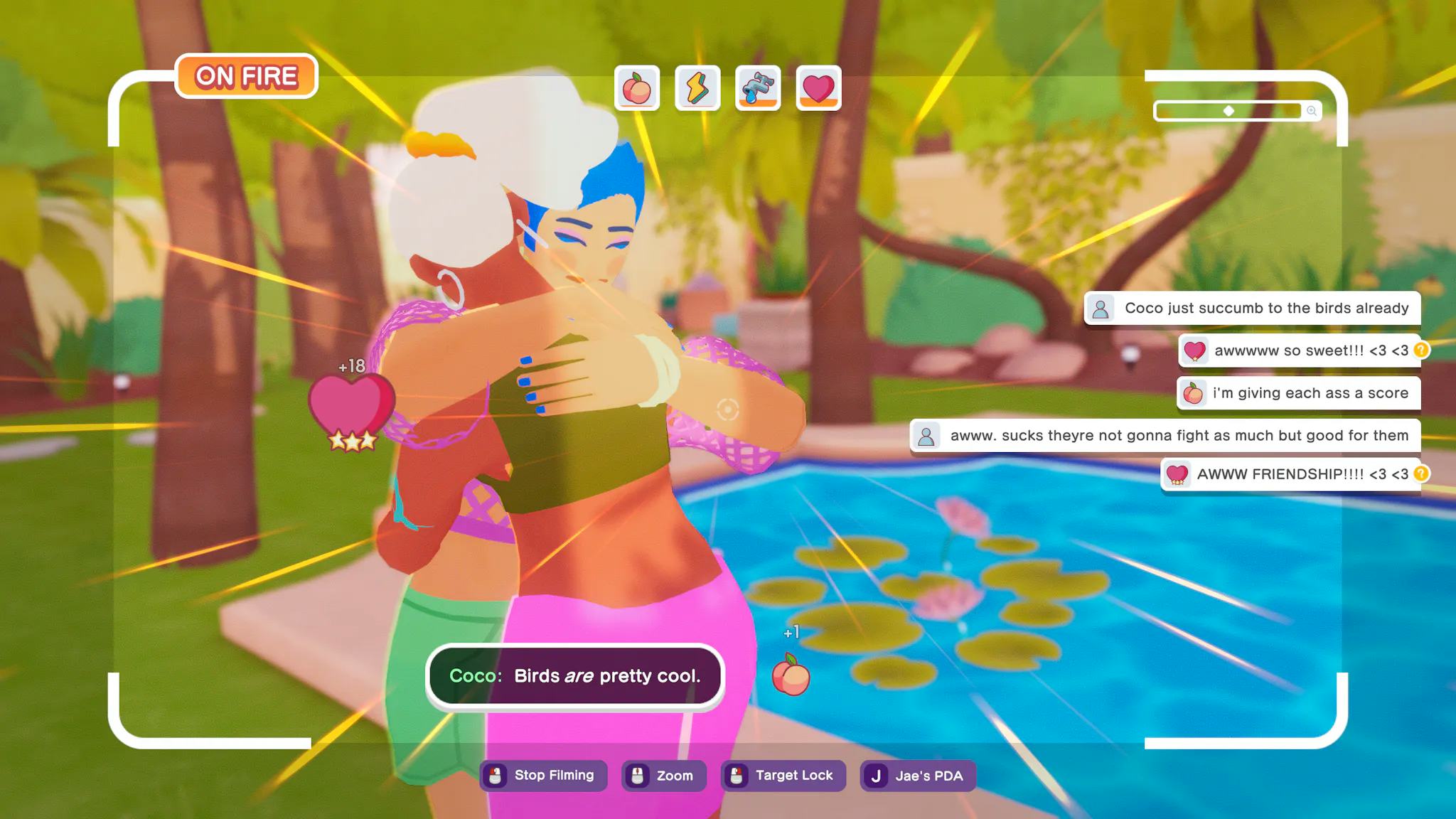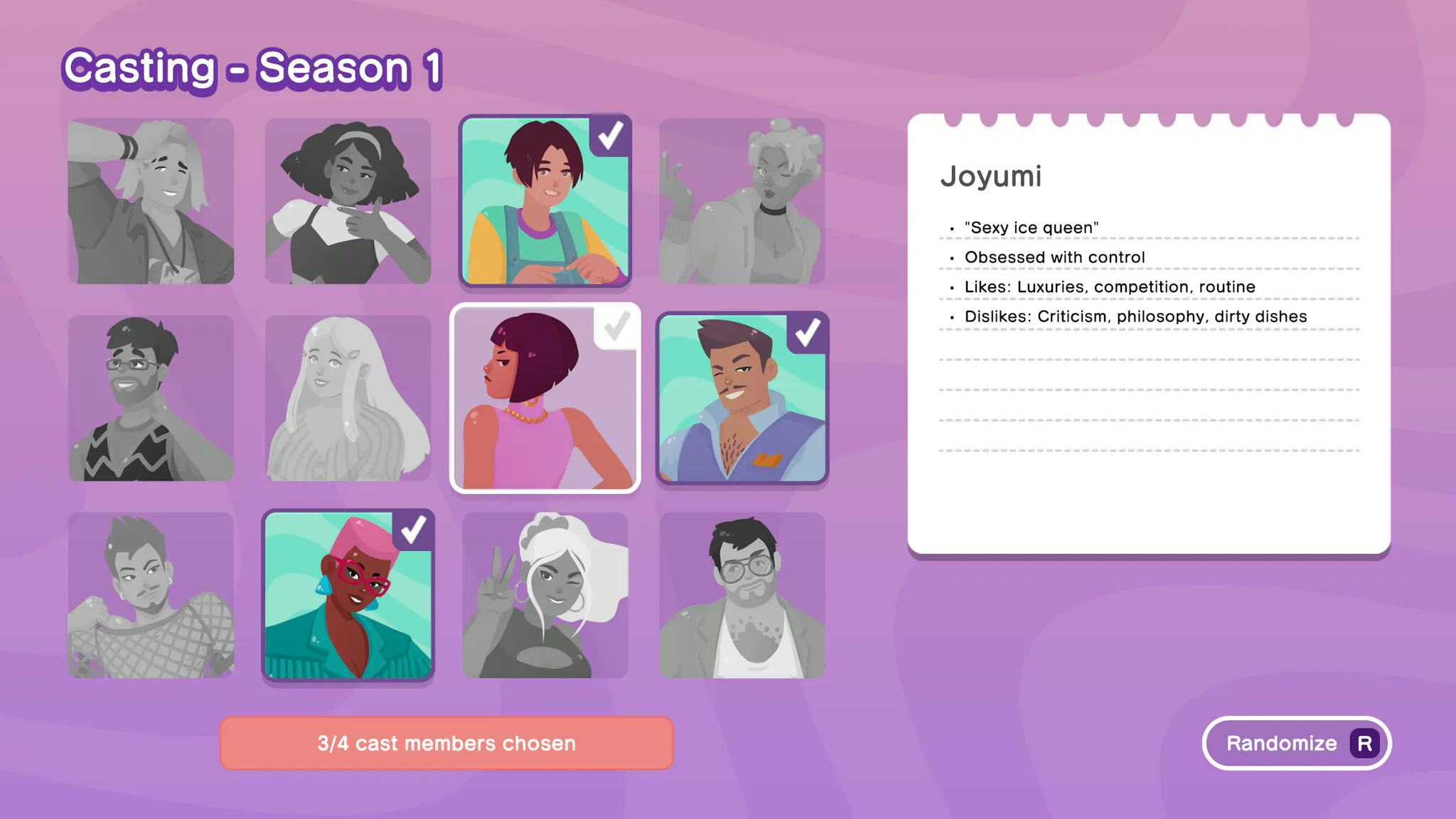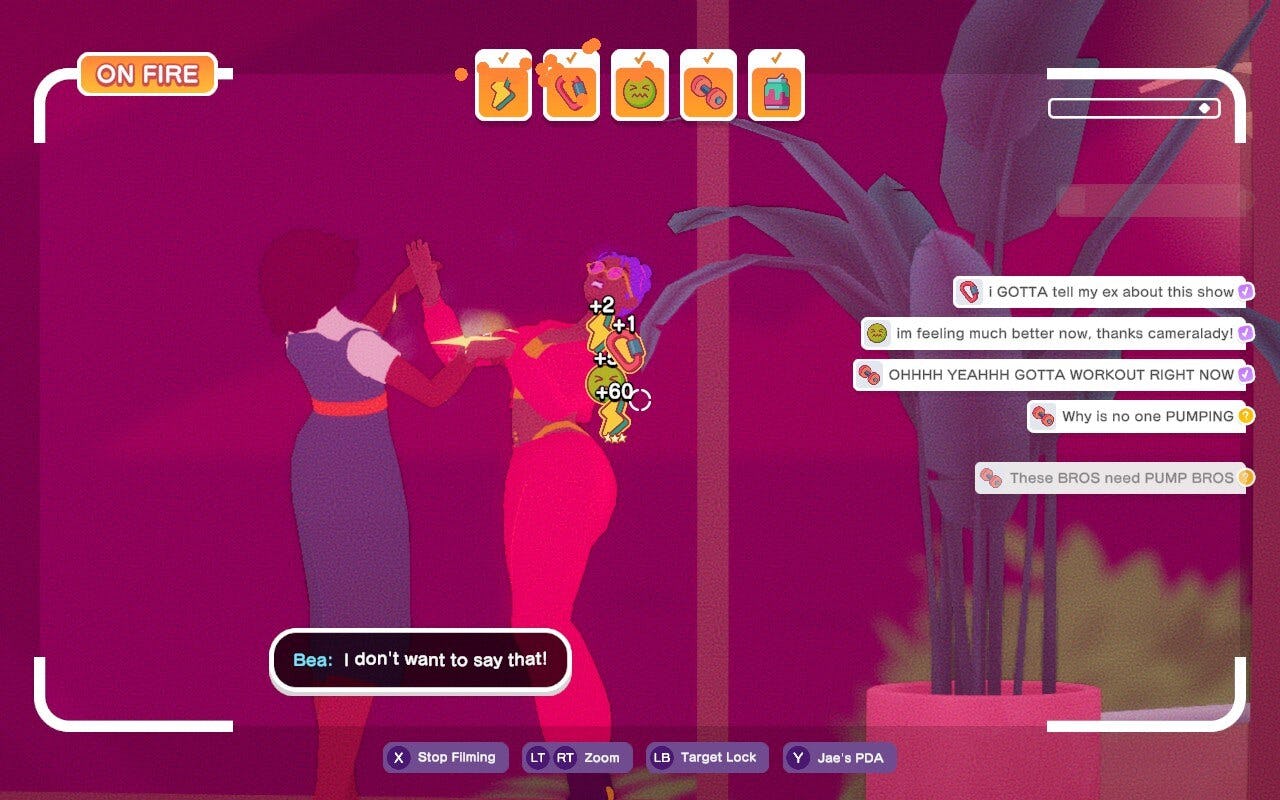
Reality television has been America’s guilty pleasure for over 25 years. The eighth season of MTV’s Real World (which coincidentally aired in 1999) would have been my first exposure to the then-bizarre concept of packing firecracker personalities into a tight space, setting the fuse with booze, and filming the results. The torrent of reality shows that followed, from mainstays like Survivor, to short-live bizarre competition shows like America’s Next Top Model and Flavor of Love, grabbed the attention of kids like me and my older sister. We couldn’t pull ourselves away from these well-produced trainwrecks being broadcast to the masses, no matter how weird and surreal they became.
In many ways, The Crush House emulates that feeling exactly. Except this time, you’re not just watching the trainwreck, you’re directly involved in its derailment. It’s not a perfect game. Some design decisions don’t quite work, and certain aspects of the game could do with some added variety. But these flaws are mostly outshined by the originality of its concept, and the sheer audacity with which it executes it.
The Crush House is the trashy reality sandbox I didn’t know I needed, and I hope developer Nerial revisits this concept sometime in the future.

In The Crush House, you play as Jae Jimenez Jung, a producer hired to film the game’s titular reality show set in a beachfront Malibu mansion in 1999. As a producer, you’re responsible for casting the four beautiful singles for each season of The Crush House. There’s a puzzle element to figuring out who gets along well (or not so well) with who, and the start of each five-episode season gives you plenty of room to experiment. There’s also something joyfully sinister about reading the casting profiles of two opposite personalities and deciding “Yes, this should pop the ratings.”
Ratings are the driving force for most of the decisions you’ll make in The Crush House. Every day you film, you’re given a basic outline of who’s watching, and you’ll be curtailing who, what, and how you record the day's actions. Suburban Moms will want to see attractive people living it up, Butt Guys want to see what everyone’s packing, and elderly viewers want to see these singles use those butts for sitting. If you can meet the needs of the people watching, you’ll avoid cancellation, allowing you to spend ad money collected between shots on house props, giving the cast more to interact with throughout the day.
By the end of each passing season, you’ll learn more about these distinct characters and what they like to do around the house. This cycle feels like a rogue-like take on The Sims. The core mechanics can be repetitive, but some story beats keep things moving forward.

Speaking of which, The Crush House has a surprisingly underlying narrative that I won’t spoil. I will say that it provides some interesting commentary on the depraved nature of reality shows, and what happens to reality stars once the cameras stop rolling.
The game has its shortcomings. Players can have a tough time balancing The Crush House’s two halves. It can be hard to fully invest in genuinely interesting house drama when you’re constantly reading the ever-changing wants and needs of the audience. Satisfying audiences can be finicky as well. Sometimes, you’ll inexplicably get credit for appeasing the needs of an audience seemingly without meeting them. Other times, you won’t get credit at all despite putting their requests front and center.
Perhaps the game’s biggest setback comes when you hit game over. Every time you fail to meet the rating requirements by nightfall, players are sent back to their rooms to drop off the camera, then sent all the way back upstairs to the pool where they must enter an elevator, sit through a load screen, then walk to the end of a long hallway and jump into a slide. The first time through this two-minute process, I expected a jump scare or narrative redirect. By the fifth time, I wished the developers had made a simple results screen with a retry option.

As frustrating as these moments were, they were outshined anytime The Crush House fired on all cylinders. Seeing how these singles interact, the hilarious ad spots that play between takes (each of which has been crafted by fellow indie studios), and looking for the next big, explosive moment kept me playing. Every time the cast pushed new raunchy boundaries, I sat there with a big dumb smile hoping they’d go just a little bit further. I felt for Bea, the shy and standoffish nerd girl, when the rest of her housemates refused to acknowledge her. I hollered in disbelief every time Emile (that absolute madman) would say something wildly out of pocket. It took every fiber in my being to not cast Ayo at the start of every season.
By my fifth season premiere, I decided it was time for an All-Stars rendition of The Crush House. I built the perfect returning cast of explosive personalities, those who deserved a second shot at finding love, and instigators who would spin up drama. With the exception of WWE 2K’s Universe Mode, no other game had inspired me to fantasy-book enthralling, trash television that emulates the real thing.
The Crush House is at its best when it's leaning into this trashiness and letting the player roll in the muck. The game mostly lives up to the promise of putting you in the director/producer's chair of a salacious TV show that millions of sickos can’t look away from. It nails the feeling of stoking the fires of humanity's worst qualities and rewards us for capturing the best bits just like the real thing.
My only hope is that Nerial revisits this concept in future updates or sequels. The concept is too good to move on after just one season, and with some careful refinements to these ideas here, The Crush House could be the perfect adaptation of television’s guiltiest pleasure.







